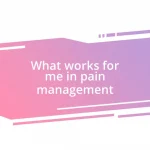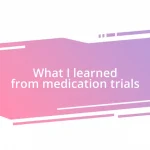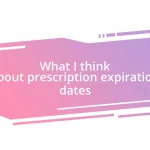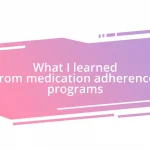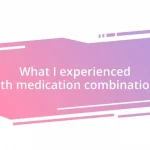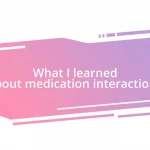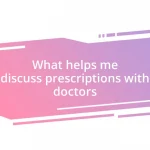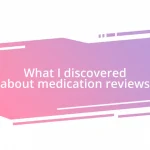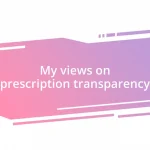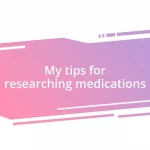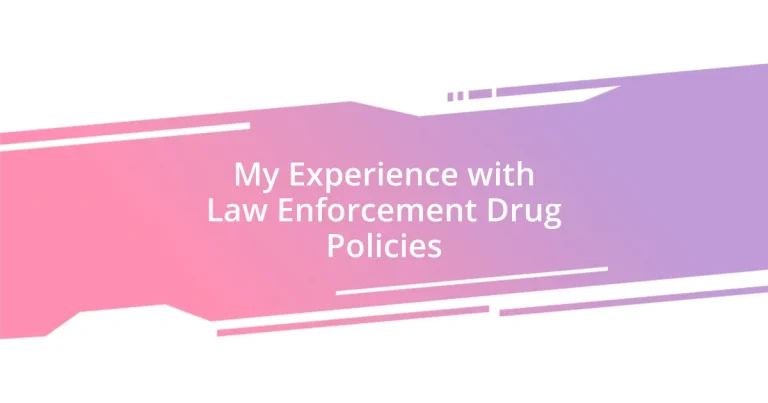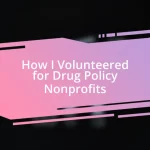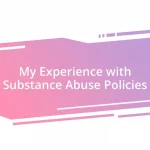Key takeaways:
- Drug policies often prioritize punishment over support, leading to emotional tolls on individuals and families affected by addiction.
- Effective law enforcement strategies can include community policing, diversion programs, and harm reduction techniques to promote healing instead of criminalization.
- Building trust through open dialogue and collaboration between law enforcement and communities is essential for creating effective and compassionate drug policies.
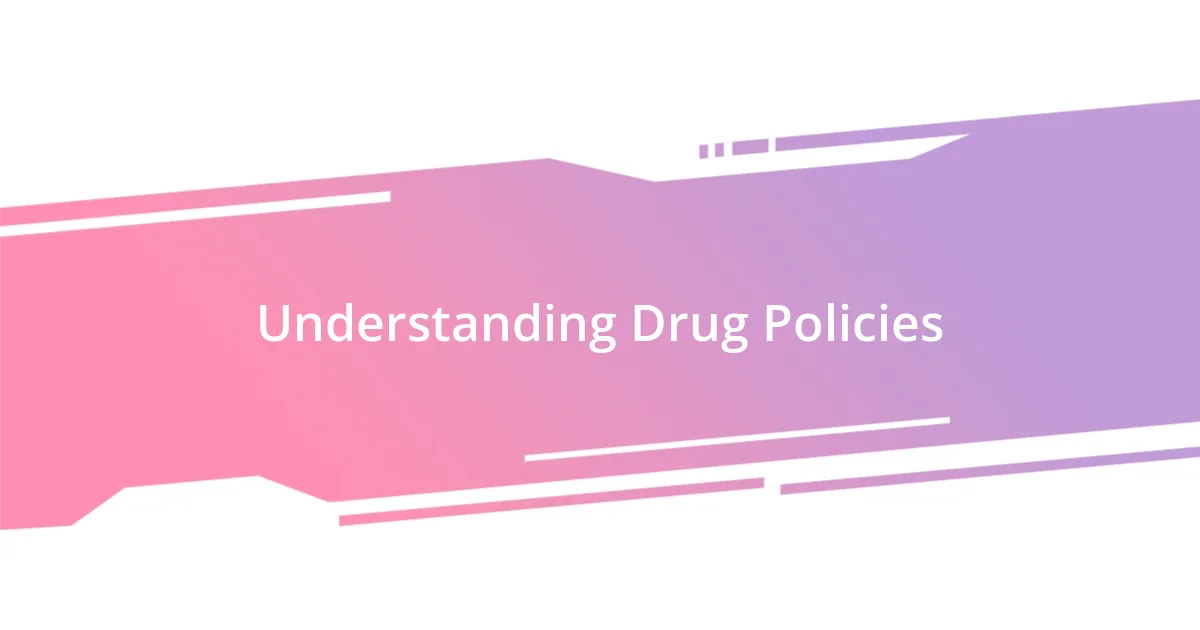
Understanding Drug Policies
When I think about drug policies, I can’t help but reflect on how complex and often contradictory they can be. For instance, while laws aim to regulate substance use for public health, they can sometimes lead to stigmatization and harsh penalties that don’t address the root causes of addiction. I often wonder, how effective can a policy be if it doesn’t take the personal experiences of individuals into account?
I remember a conversation with a friend who had a loved one struggling with addiction. She shared her frustration at seeing that person face criminal charges for drug possession, rather than receiving compassionate treatment for their struggles. This experience opened my eyes to the emotional toll these policies take—not just on the individuals but also on their families. It really made me question, why is it that we often prioritize punishment over healing?
Ultimately, understanding drug policies involves recognizing their historical context and the social narratives that shape them. It’s essential to assess how these laws can evolve to promote healing rather than harm. Each time I explore this, I find myself grappling with the question: can we create a system that supports accountability while fostering compassion? The more I learn, the more I realize that navigating these policies is about seeking a balance between safety and support.
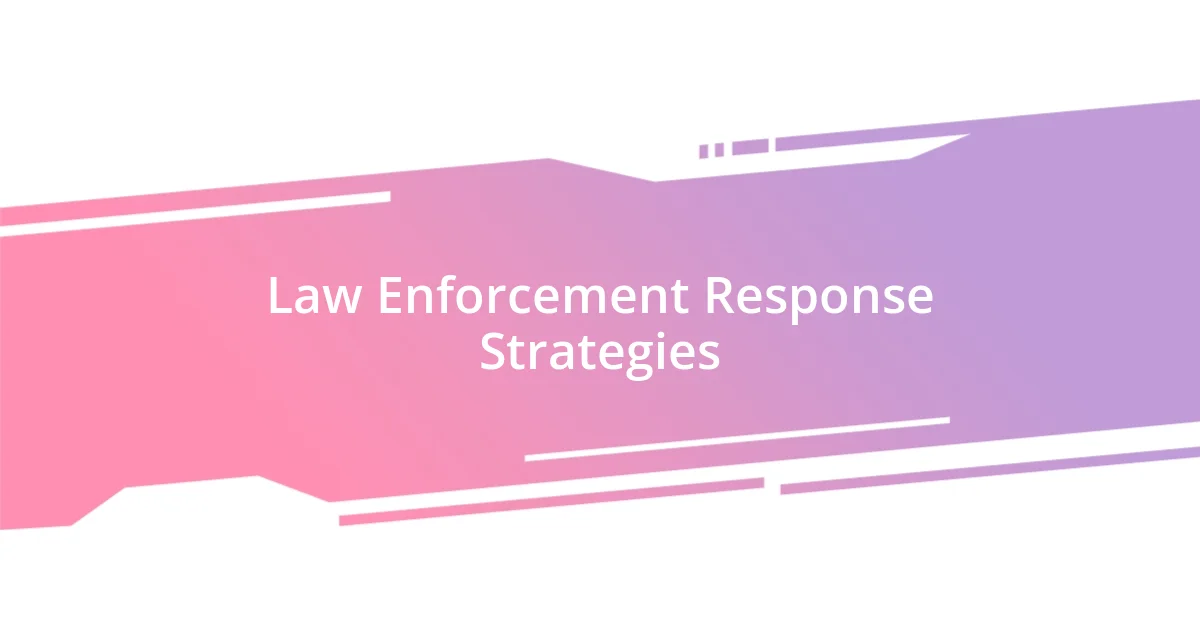
Law Enforcement Response Strategies
Law enforcement response strategies to drug-related offenses can vary significantly based on the approach taken by individual departments and municipalities. In my experience, some law enforcement agencies prioritize community-oriented solutions, focusing on collaboration with local health services to tackle the underlying issues of drug use. I’ve seen the impact of such strategies; community trust can be rebuilt when officers participate in dialogues with residents instead of solely enforcing the law.
Here are some common response strategies:
- Diversion Programs: These programs redirect offenders into treatment instead of the criminal justice system, acknowledging the need for rehabilitation.
- Community Policing: By building relationships with community members, officers can better understand local issues and respond more effectively.
- Education and Prevention: Engaging the community with educational initiatives promotes understanding rather than fear or stigma.
- Harm Reduction Techniques: Strategies like needle exchange programs aim to reduce health risks rather than criminalize behaviors.
- Collaboration with Health Services: Establishing partnerships with mental health and drug treatment facilities ensures that individuals receive comprehensive support.
Reflecting on these strategies, I recall attending a local forum where officers shared success stories from their community policing efforts. Residents felt more empowered and less apprehensive when they realized law enforcement could be allies rather than adversaries. When I witnessed that connection forming, it affirmed my belief that a more compassionate approach can create positive change.
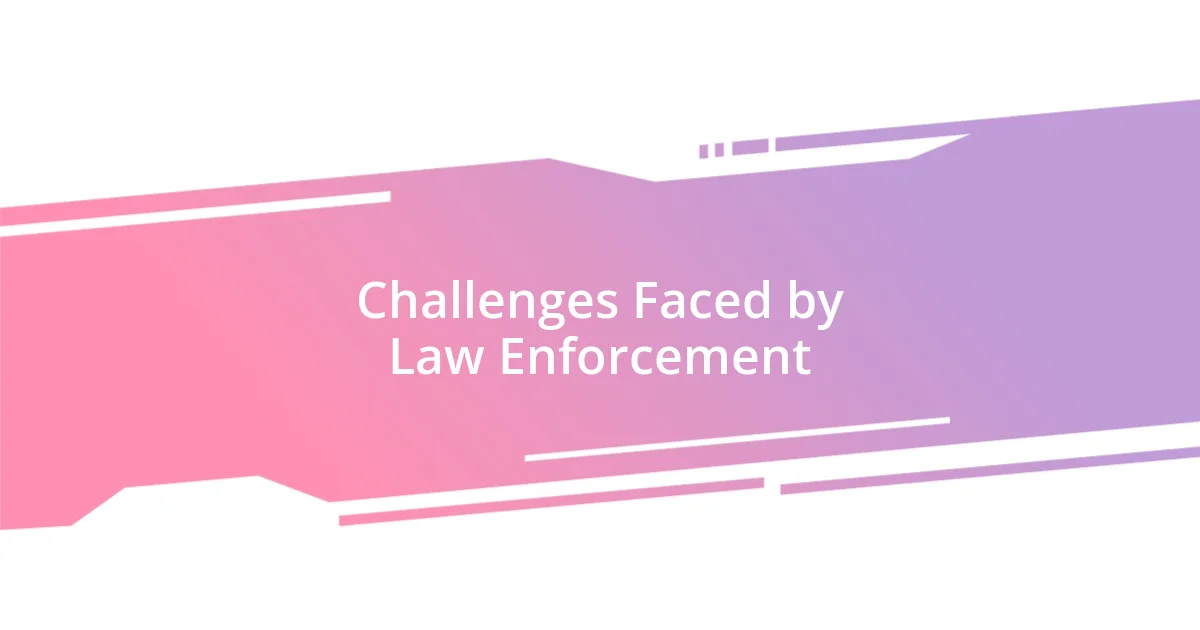
Challenges Faced by Law Enforcement
Law enforcement faces numerous challenges when dealing with drug policies, impacting their effectiveness and community relations. For instance, many police officers find themselves grappling with limited resources, which can hinder their ability to address substance-related issues adequately. I recall a discussion with a friend who works in law enforcement, and she expressed the frustration of wanting to help but feeling constrained by budget cuts that limit training and manpower. This can create a sense of hopelessness among officers, as their intentions to serve the community are easily overshadowed by bureaucratic limitations.
Another significant obstacle is the interplay between public perception and policy enforcement. Officers often feel caught in the middle, facing community pressures while trying to uphold the law. I remember attending a town hall meeting where residents voiced their concerns about drug use, expressing a desire for stricter enforcement. It struck me how officers were torn between enforcing laws and wanting to advocate for more supportive measures. This can lead to a disheartening disconnect, as both sides struggle to find common ground.
Finally, the emotional toll of enforcement can be staggering. Daily encounters with addiction’s devastating effects impact officers and their mental health. They witness the human side of drug use—someone’s child or sibling suffering—and it weighs heavily on them. I once overheard a sergeant discussing a heartbreaking case of overdose, and you could see the pain in his eyes. It made me reflect on how crucial it is for law enforcement to have access to mental health resources, not just for the communities they serve but for their own wellbeing as well.
| Challenges Faced by Law Enforcement | Impact |
|---|---|
| Limited Resources | Hinders effective response to substance-related issues |
| Public Perception | Creates pressure to enforce laws without community support |
| Emotional Toll | Affects officer wellbeing and decision-making |
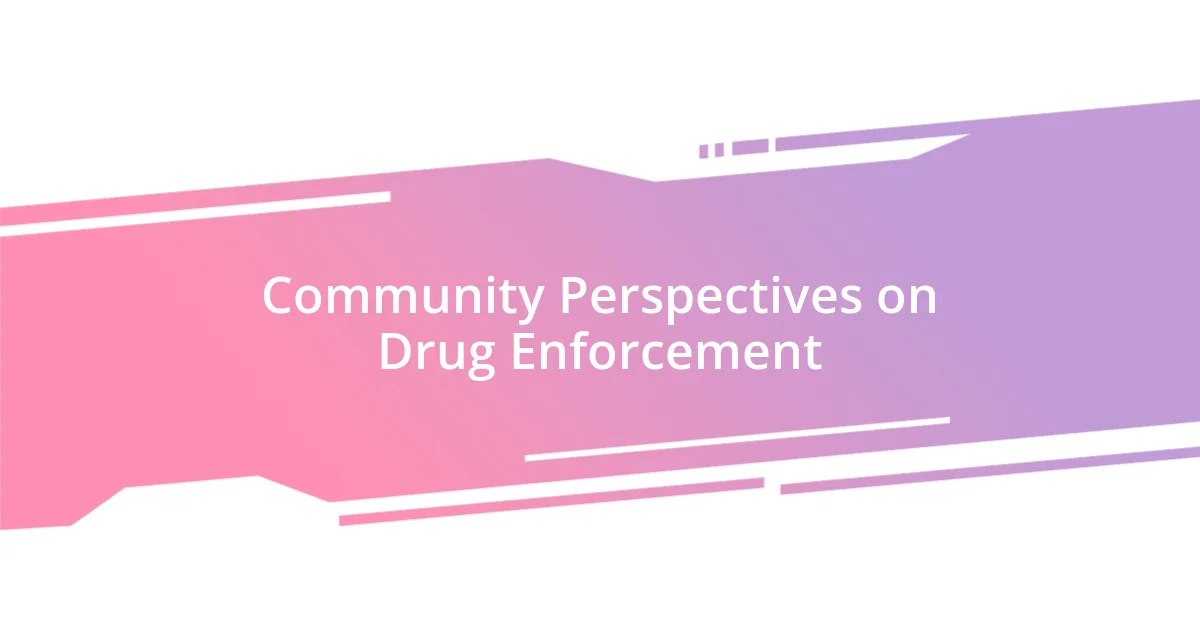
Community Perspectives on Drug Enforcement
Community perspectives on drug enforcement often reflect a complex interplay of fear, hope, and the desire for change. I remember chatting with a neighbor who voiced her concerns about increased drug activity in our area. She felt that stricter enforcement was necessary, but I couldn’t help but wonder: could there be a balance between enforcement and support? This conversation highlighted how community members often grapple with the duality of wanting safety while also advocating for compassion towards those struggling with addiction.
In my experience, strong community sentiment can significantly influence law enforcement strategies. For instance, during a community advisory board meeting I attended, residents passionately discussed the need for more accessible treatment options rather than punitive measures. It struck me how empowered people felt when their voices were heard. I realized that law enforcement has the potential to act as a bridge, fostering collaboration with community groups to create tailored solutions that genuinely meet local needs.
I’ve also encountered skepticism among residents toward law enforcement’s role in drug enforcement. A family friend, who works as a counselor, expressed that many community members view police action as disconnected and often targeted unfairly toward marginalized populations. This perspective truly opened my eyes to the necessity of building trust. How can we expect effective drug policies if there’s a wall of mistrust between those enforcing the laws and the communities they serve? It’s crucial for law enforcement to engage in open dialogues that respect and address community concerns, and I’ve seen first-hand how transparency can lead to more positive relationships.
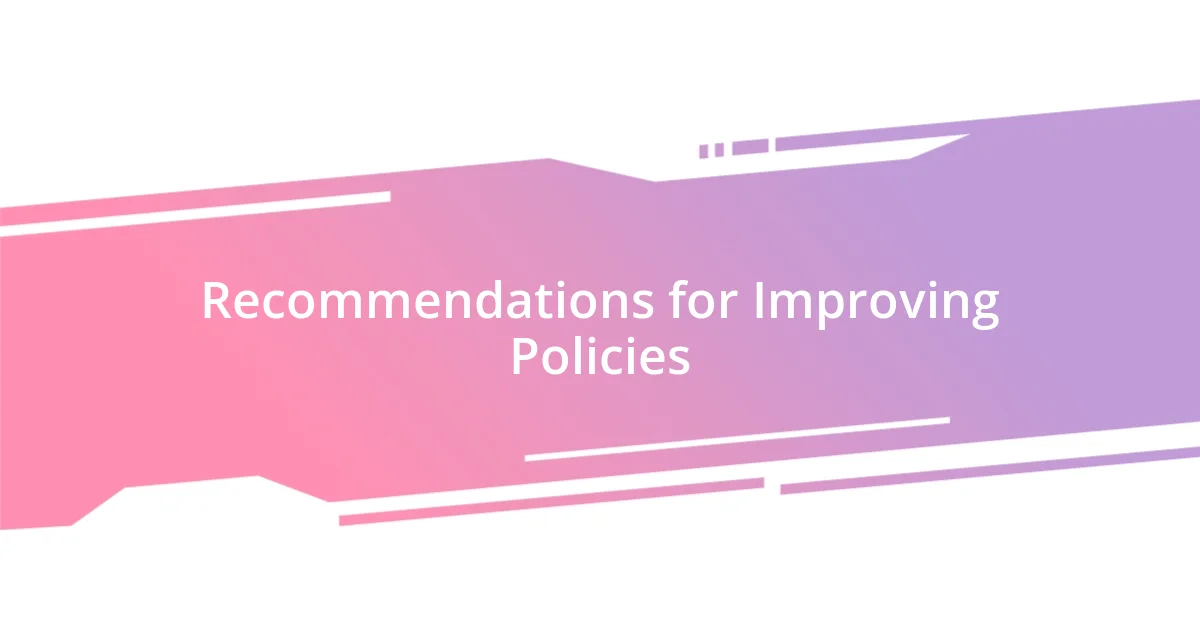
Recommendations for Improving Policies
One effective recommendation for improving drug policies within law enforcement is prioritizing training on behavioral health and addiction. I once joined a training session focused on understanding the complexities of addiction, and it was eye-opening. Officers who are better equipped to identify and address substance use disorders can lead to more compassionate responses. Imagine police officers being the first line of support, rather than just law enforcers. It could shift the narrative from punishment to assistance.
Additionally, fostering collaboration with local health agencies can create a more rounded approach to drug issues. I recall a community event where law enforcement partnered with addiction specialists for a panel discussion. The feedback was overwhelmingly positive. Community members felt heard, and officers gained valuable insights about addiction treatment options. This demonstrated to me that when law enforcement actively engages with healthcare providers, it enhances the support network available for individuals struggling with substance use.
Lastly, implementing community-centered policies is vital. I remember a neighborhood project where police worked with residents to develop strategies addressing drug issues specific to our area. That hands-on approach made a noticeable difference—it was inspiring to see officers walking with community members, sharing concerns, and working collaboratively on solutions. Isn’t it time we rethink how policies are shaped? Policies should not only be about enforcement but about community wellbeing, fostering trust and cooperation.
